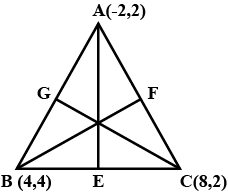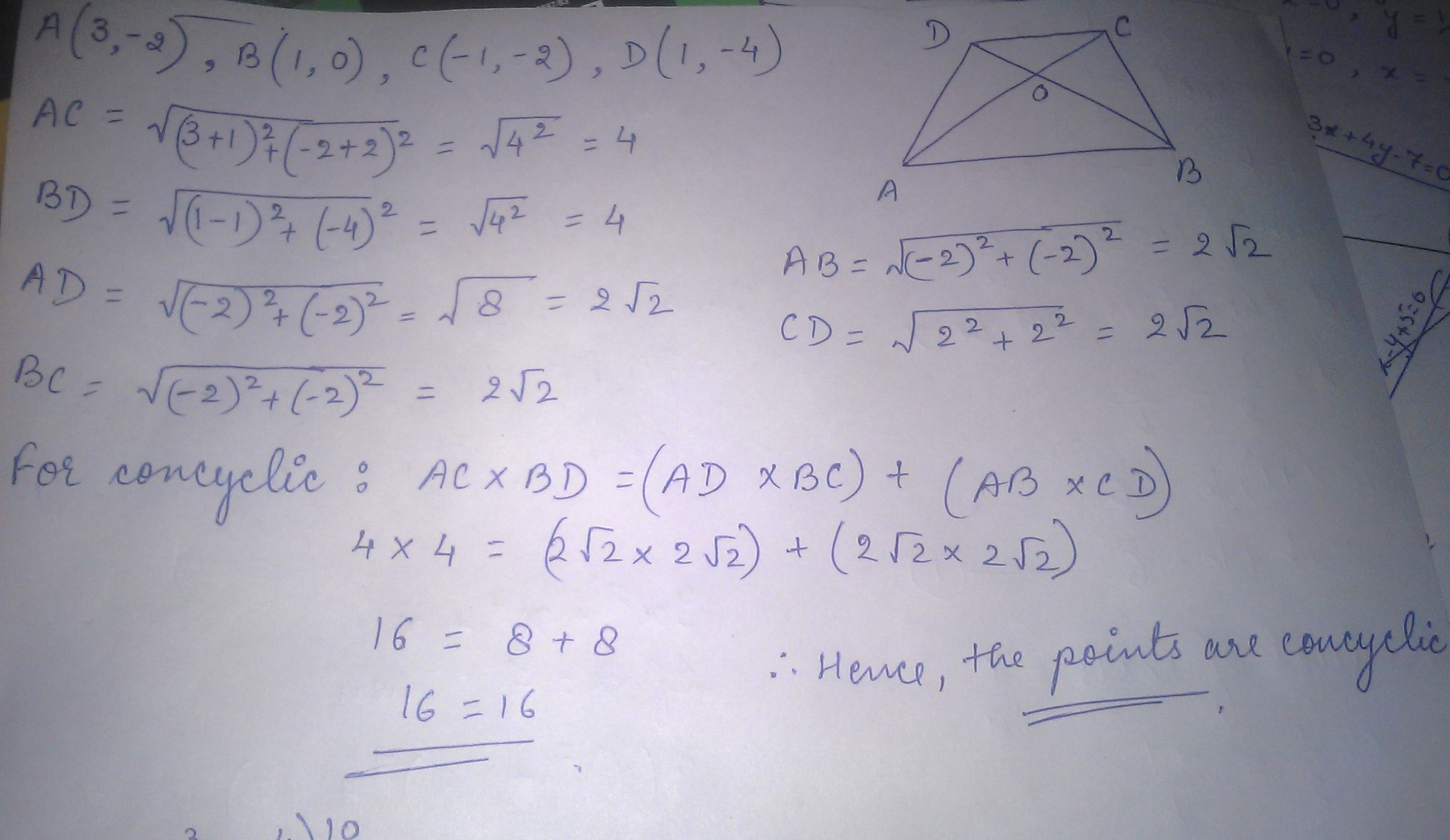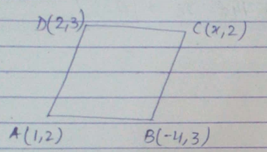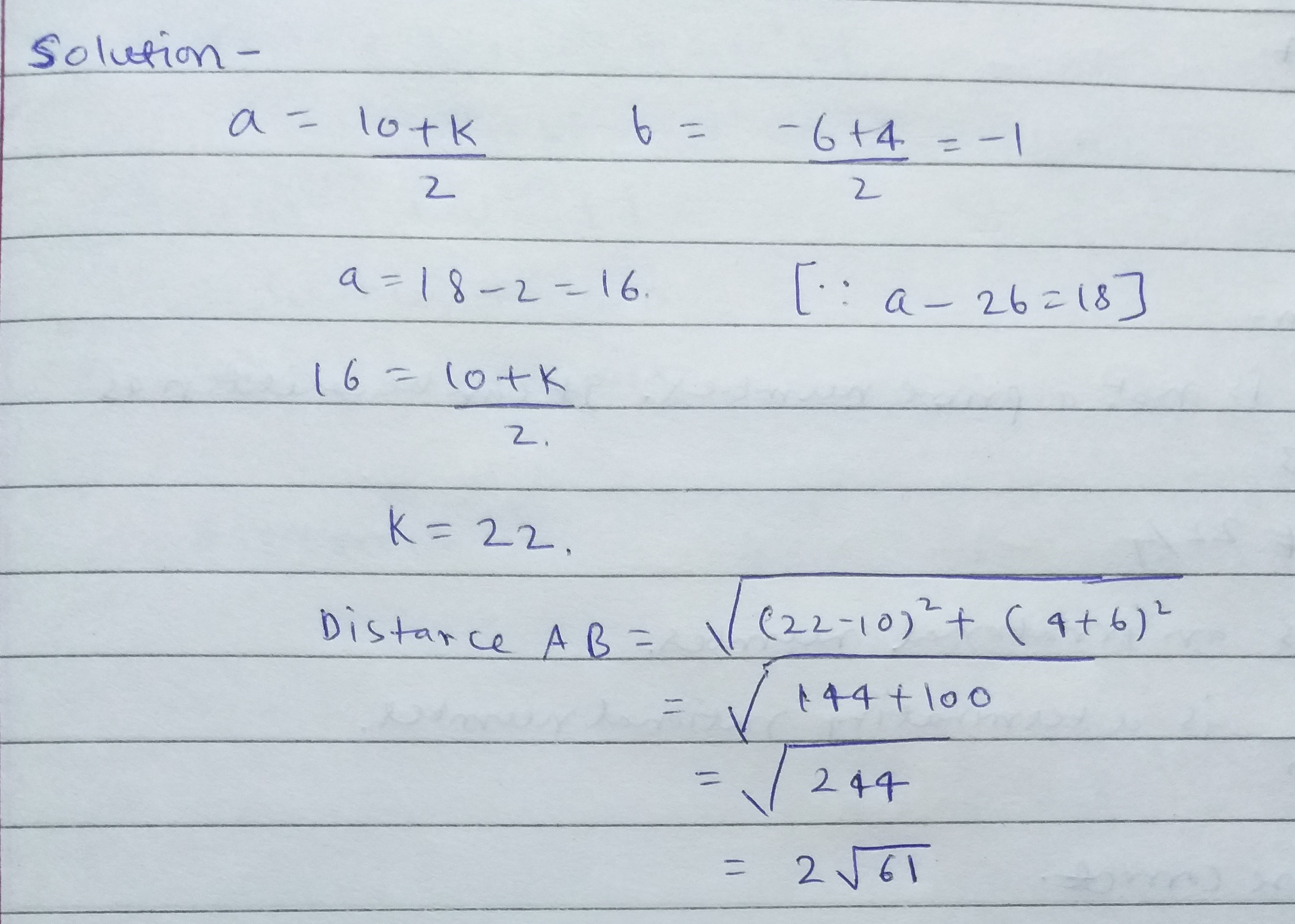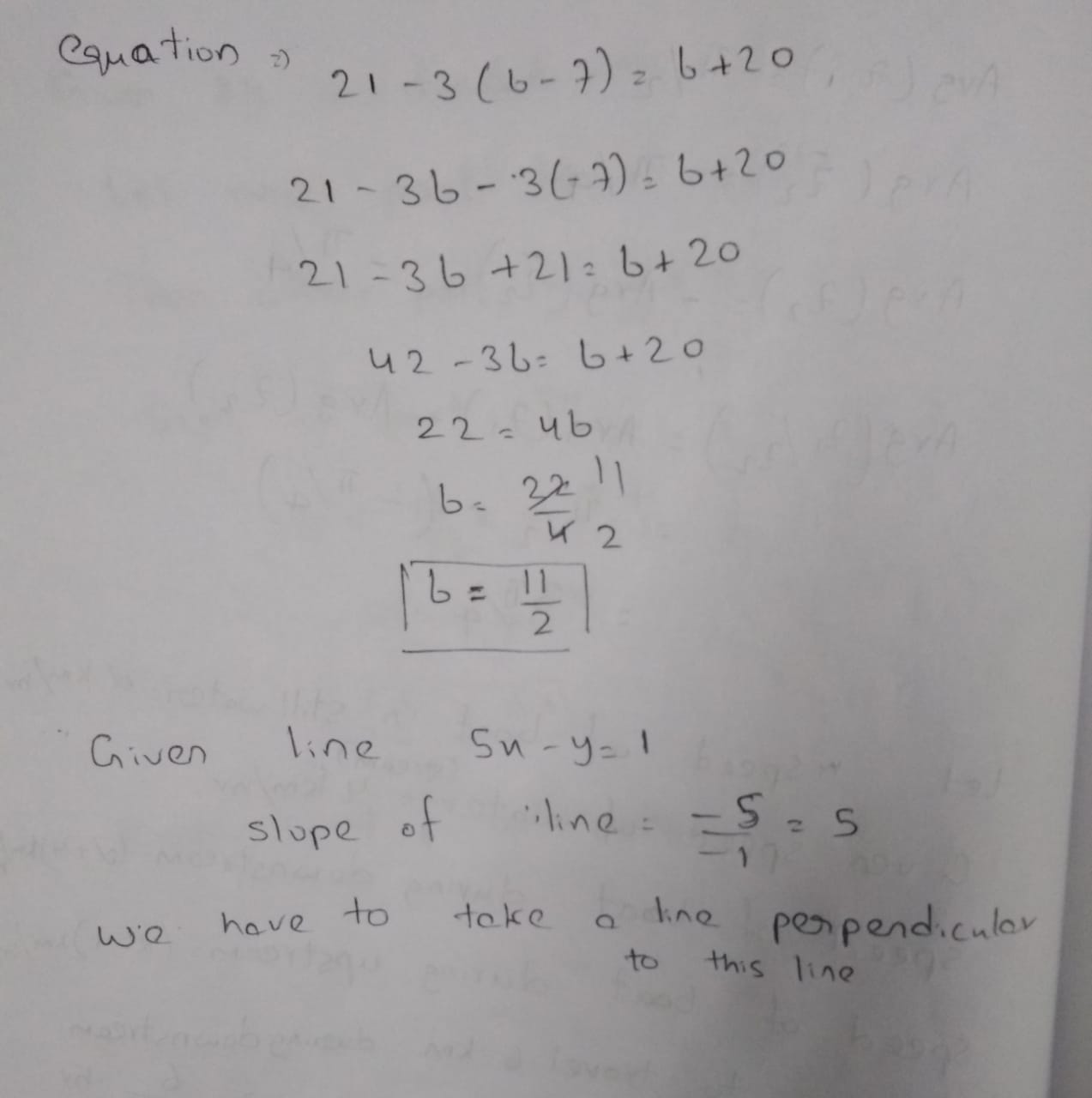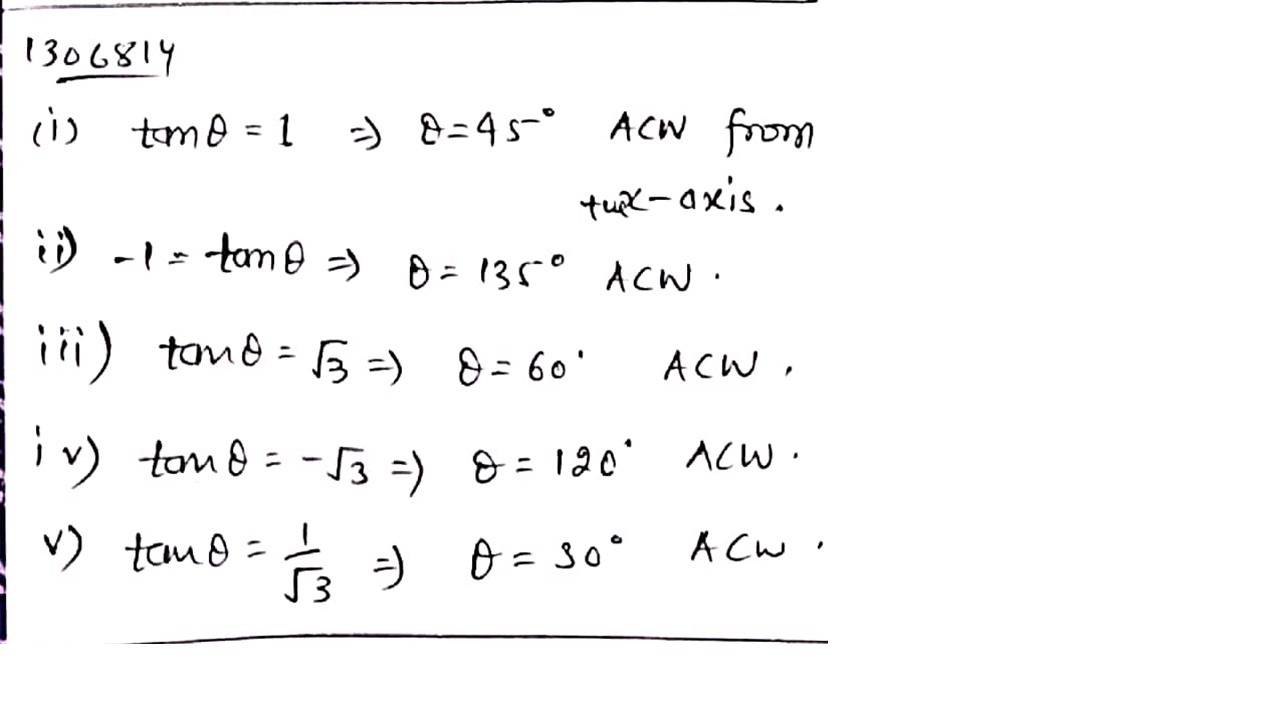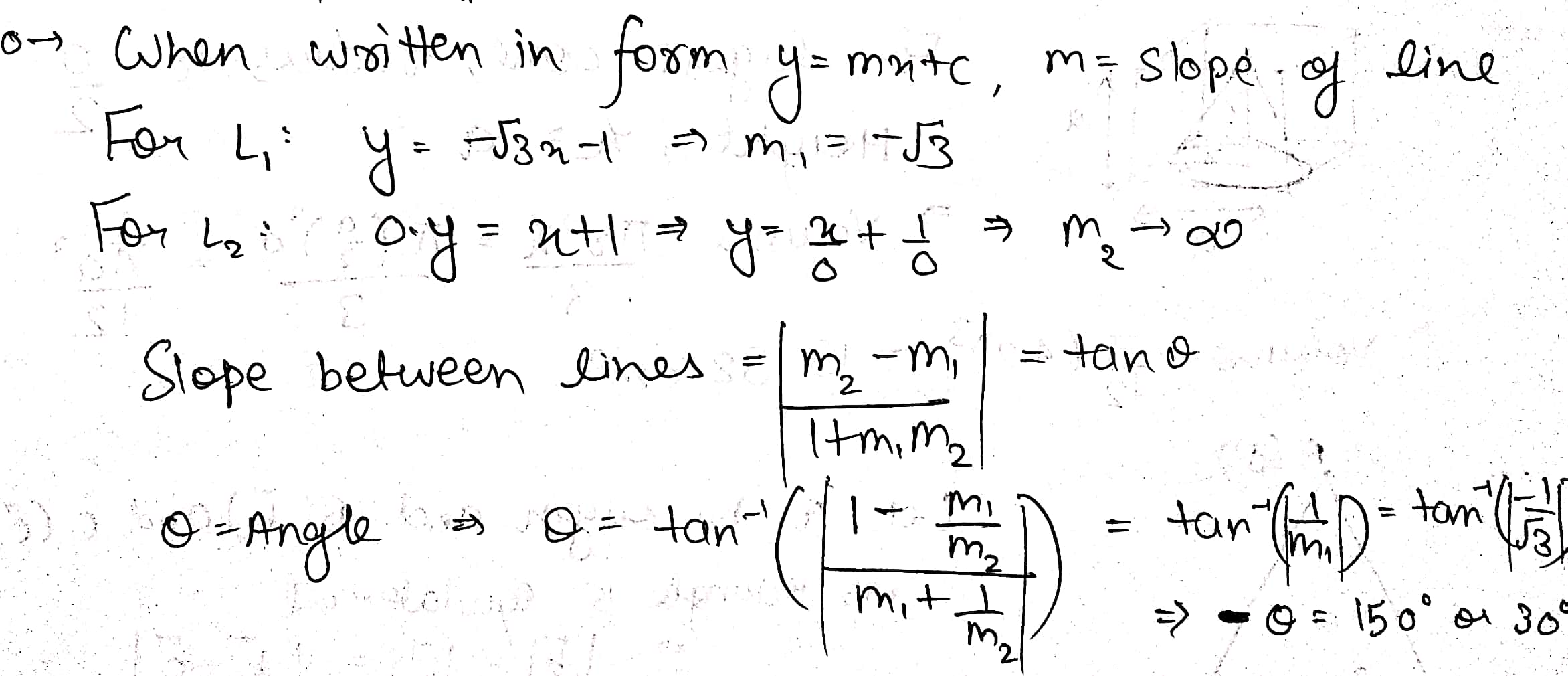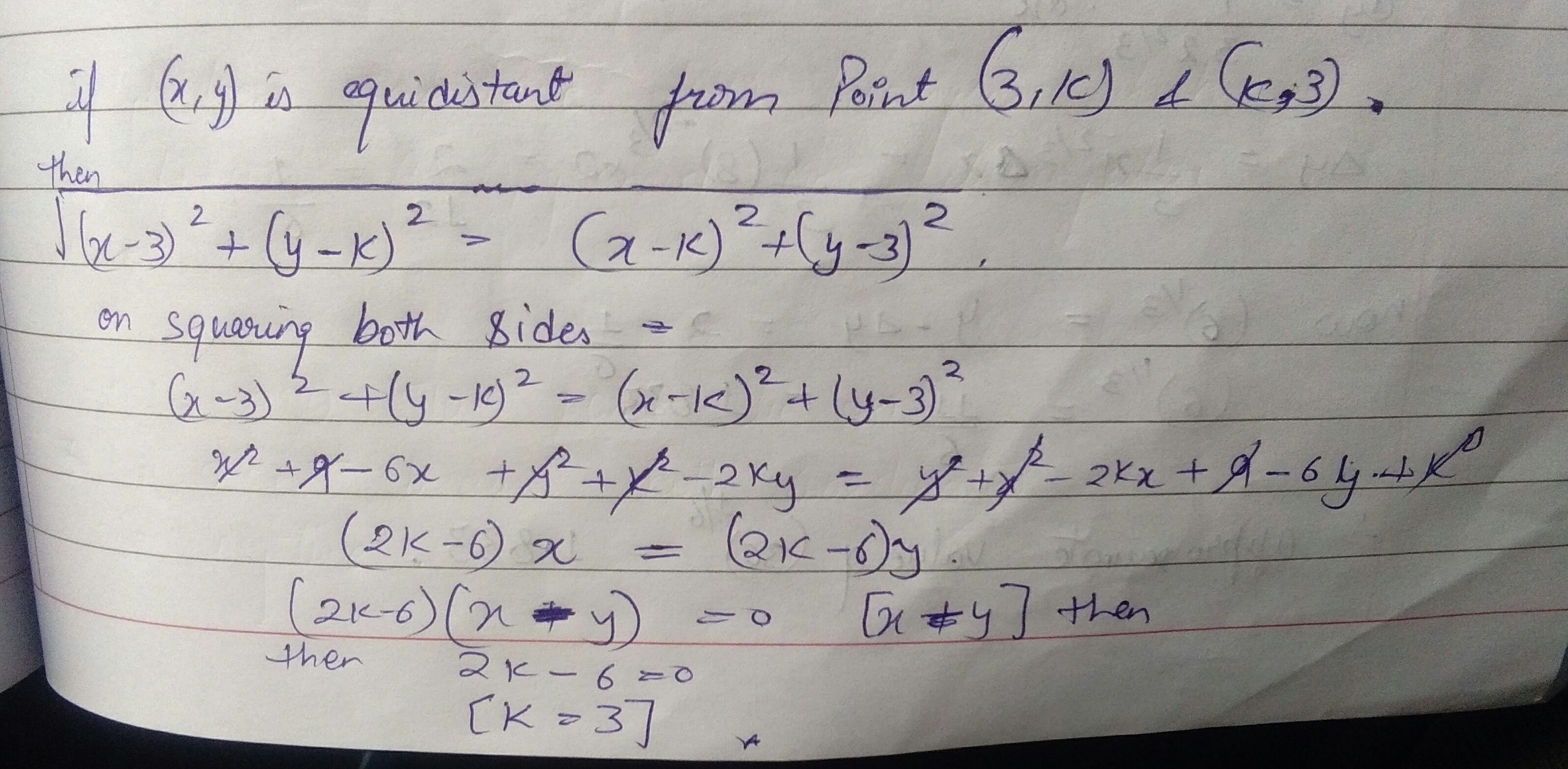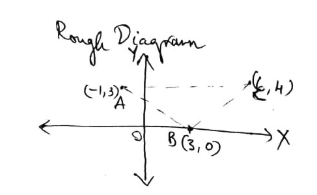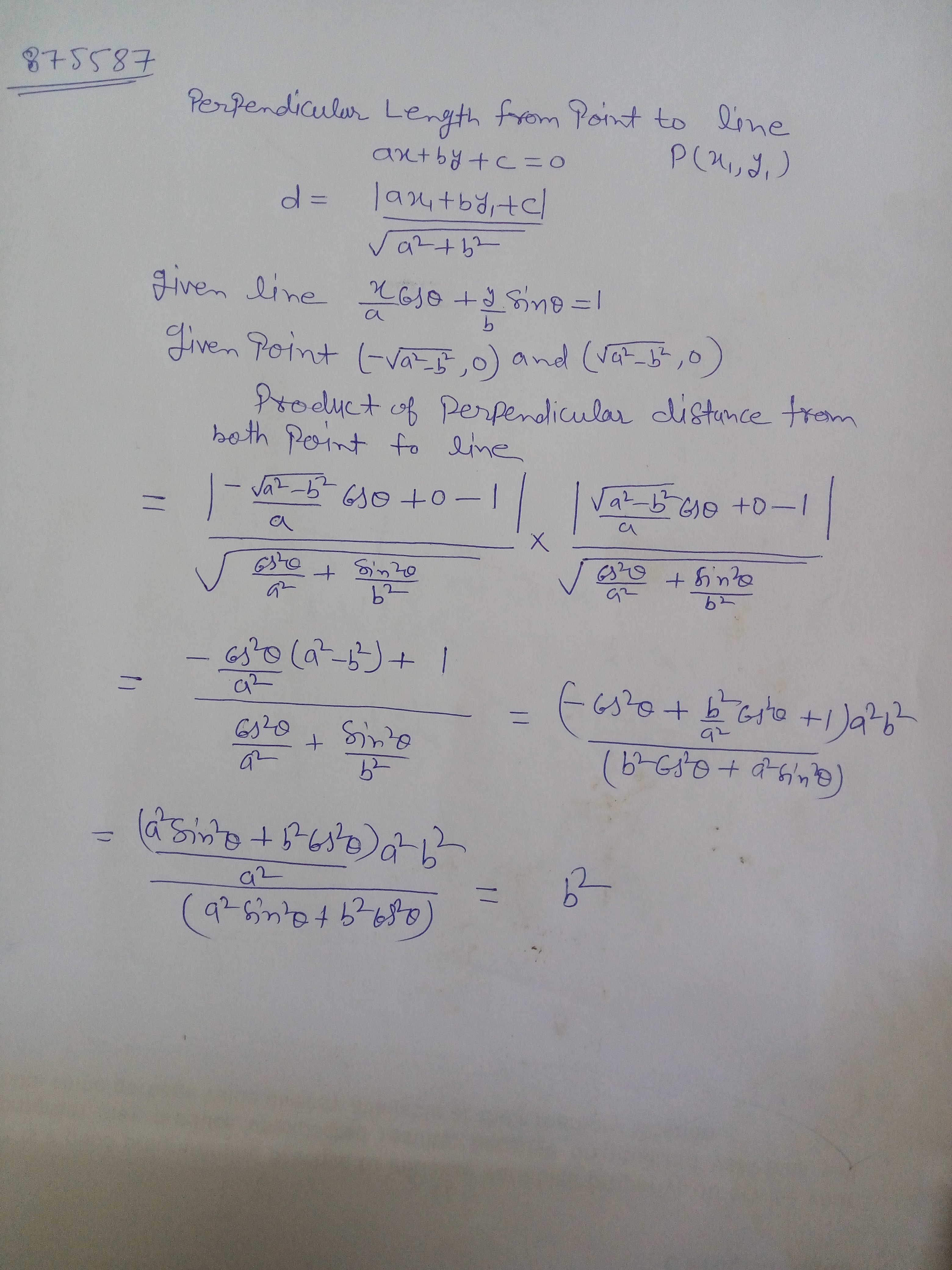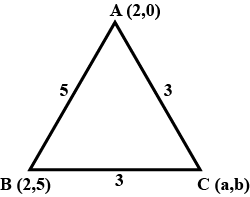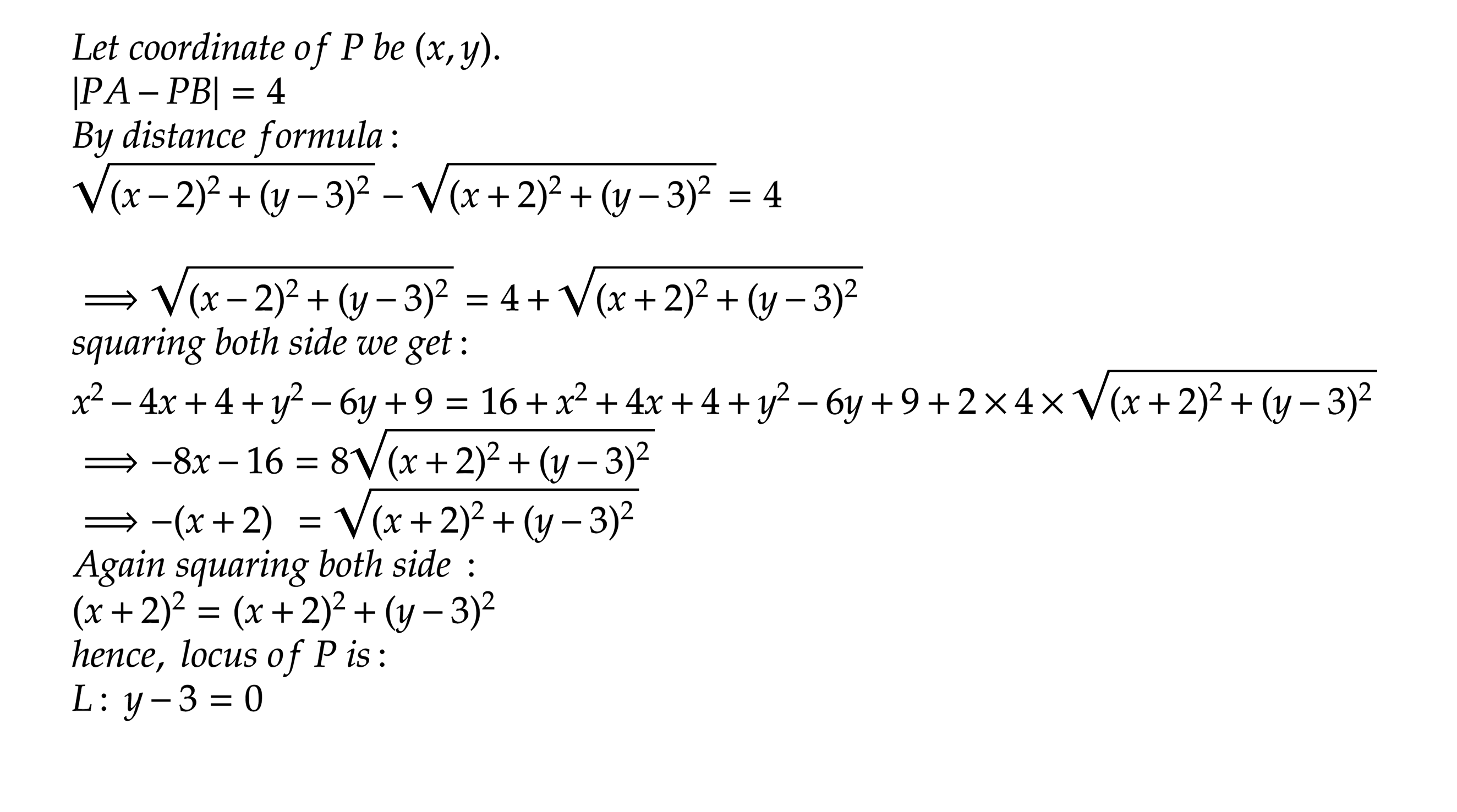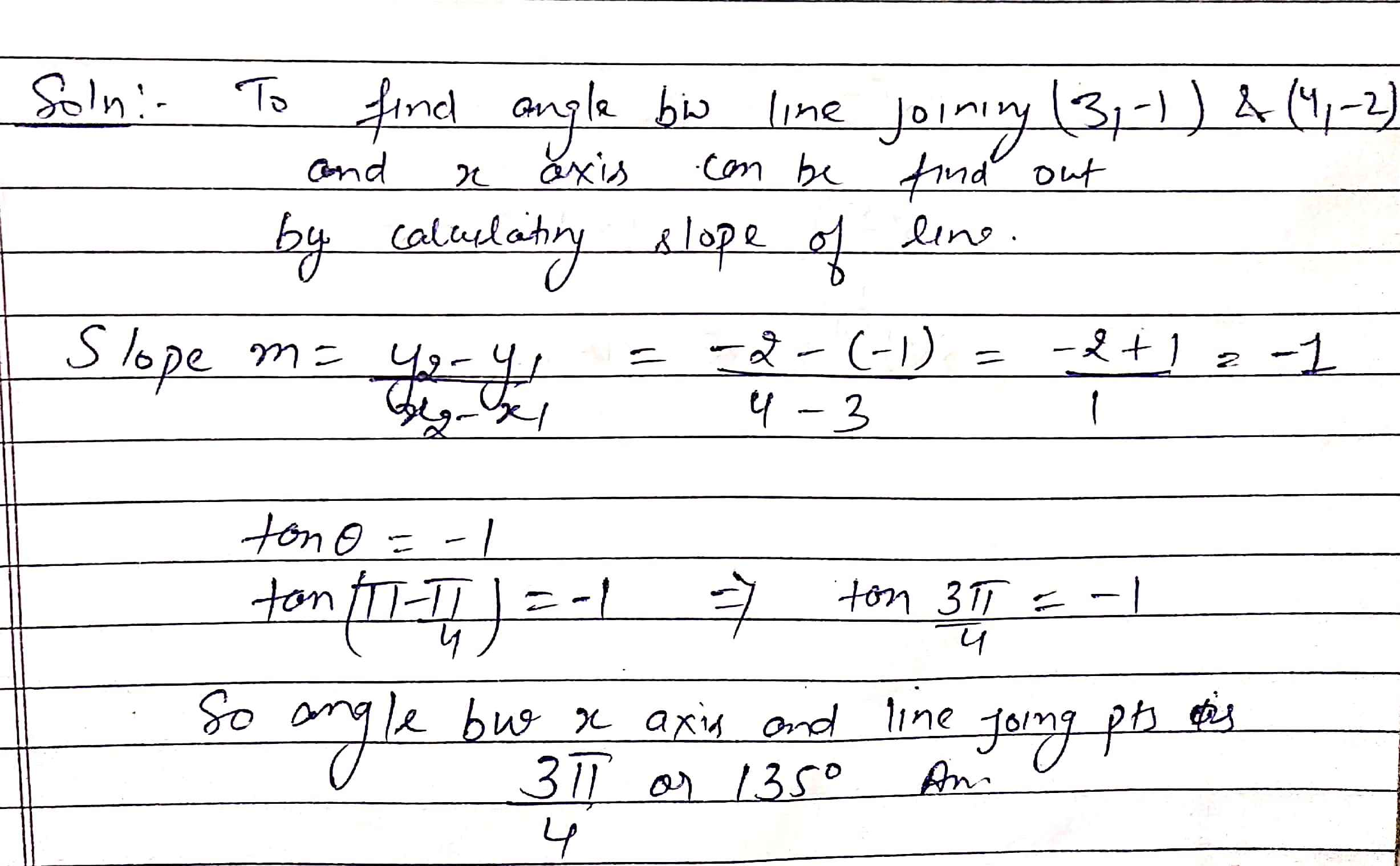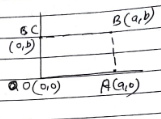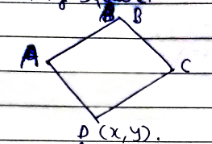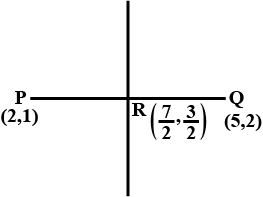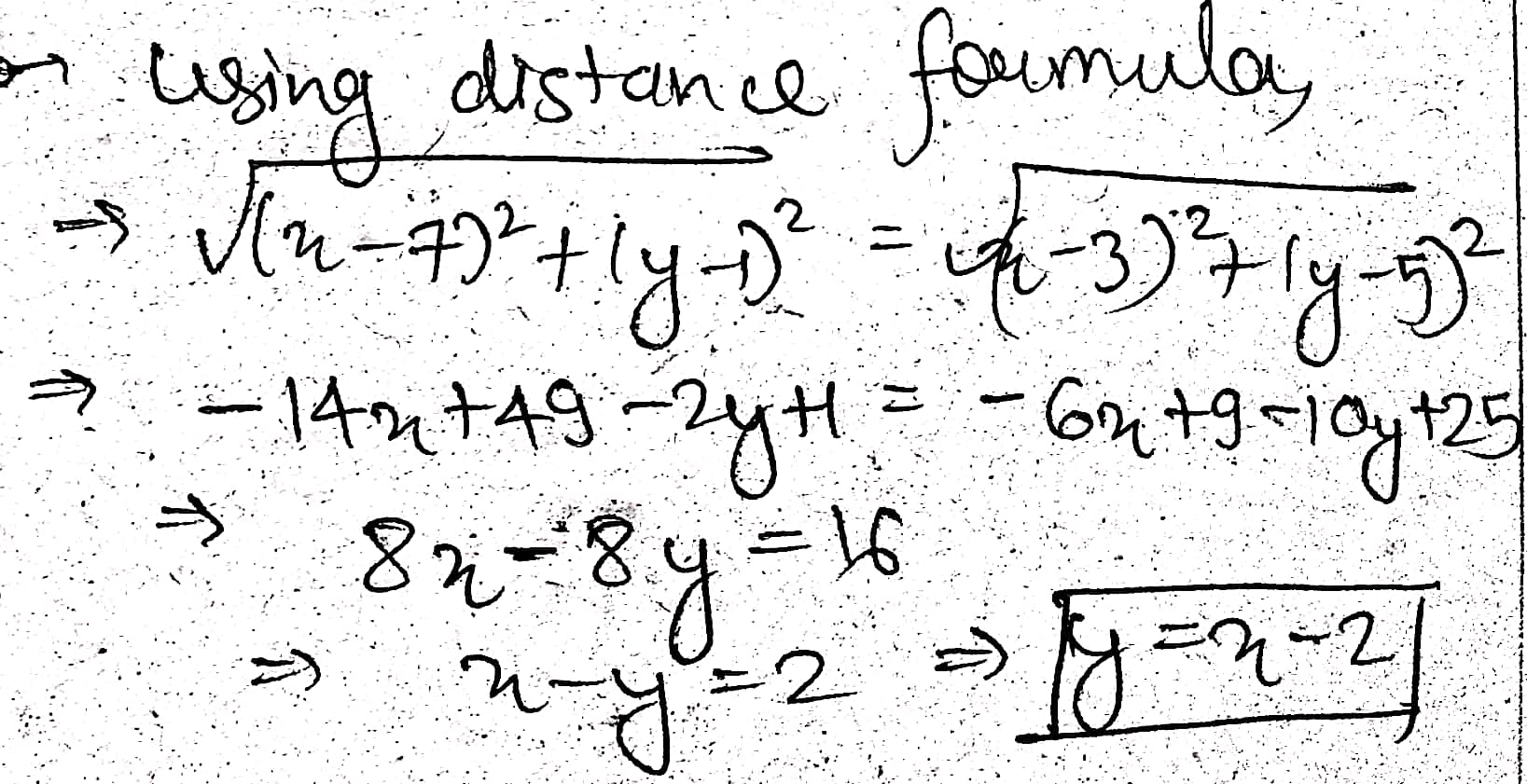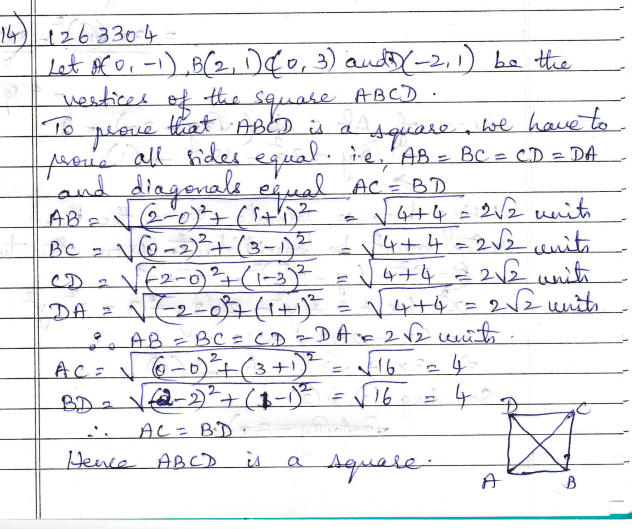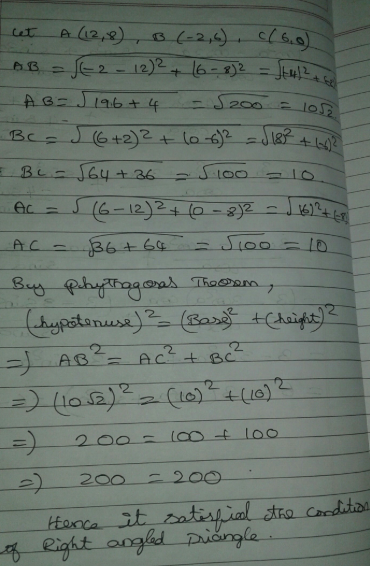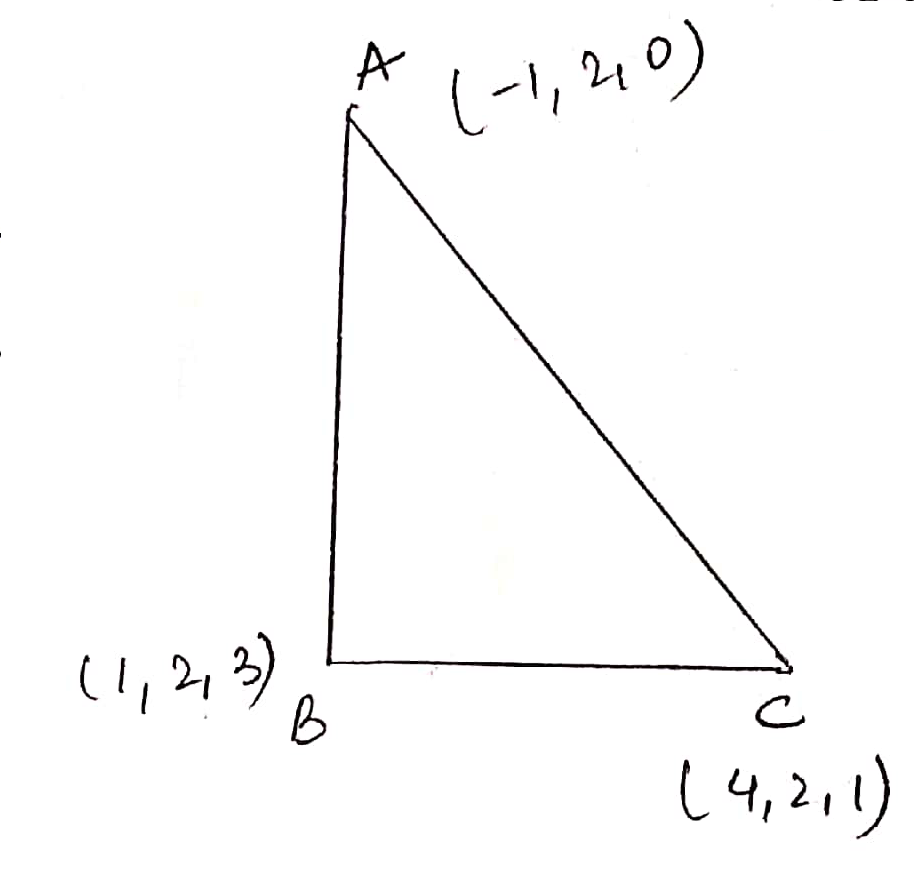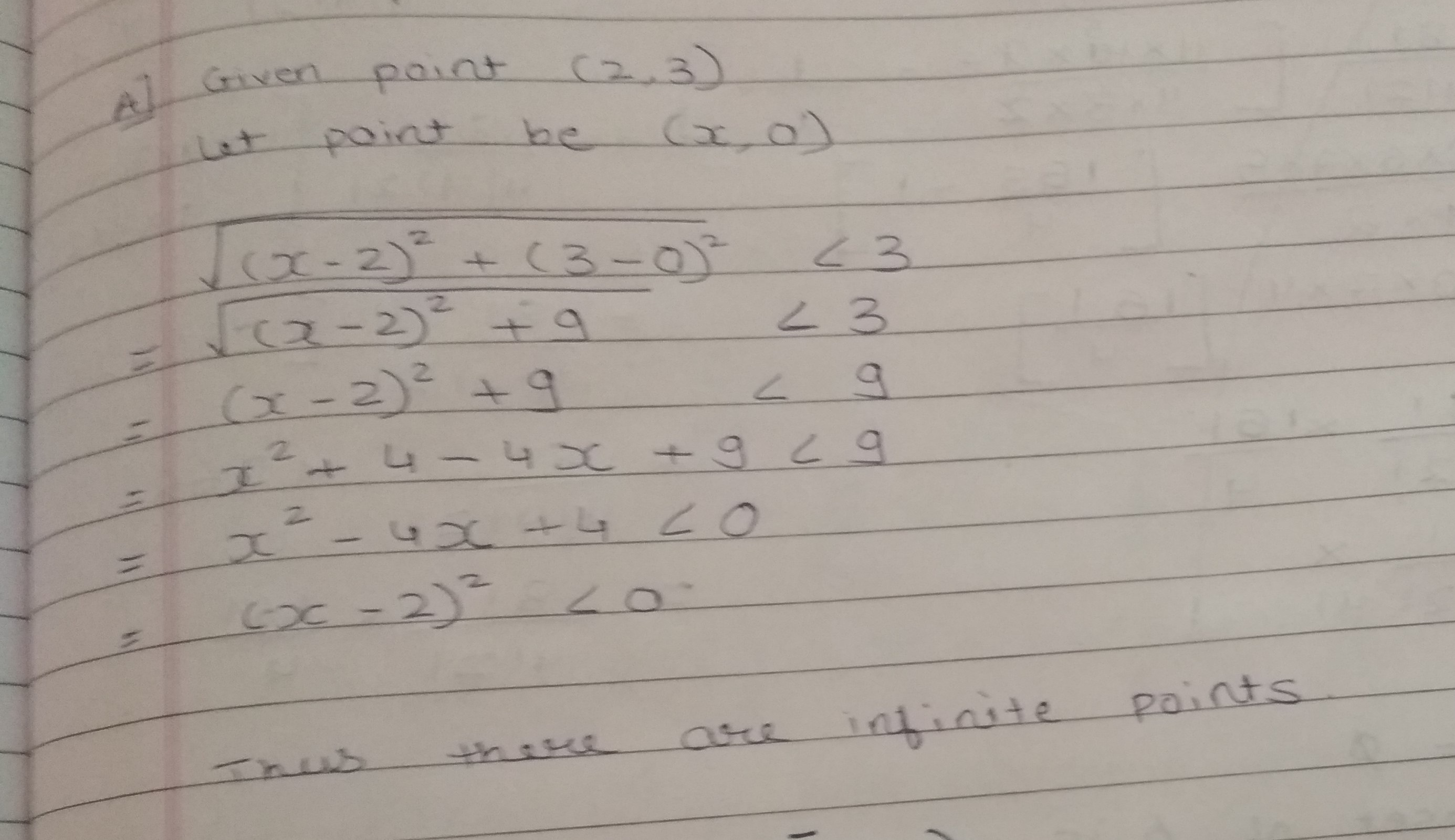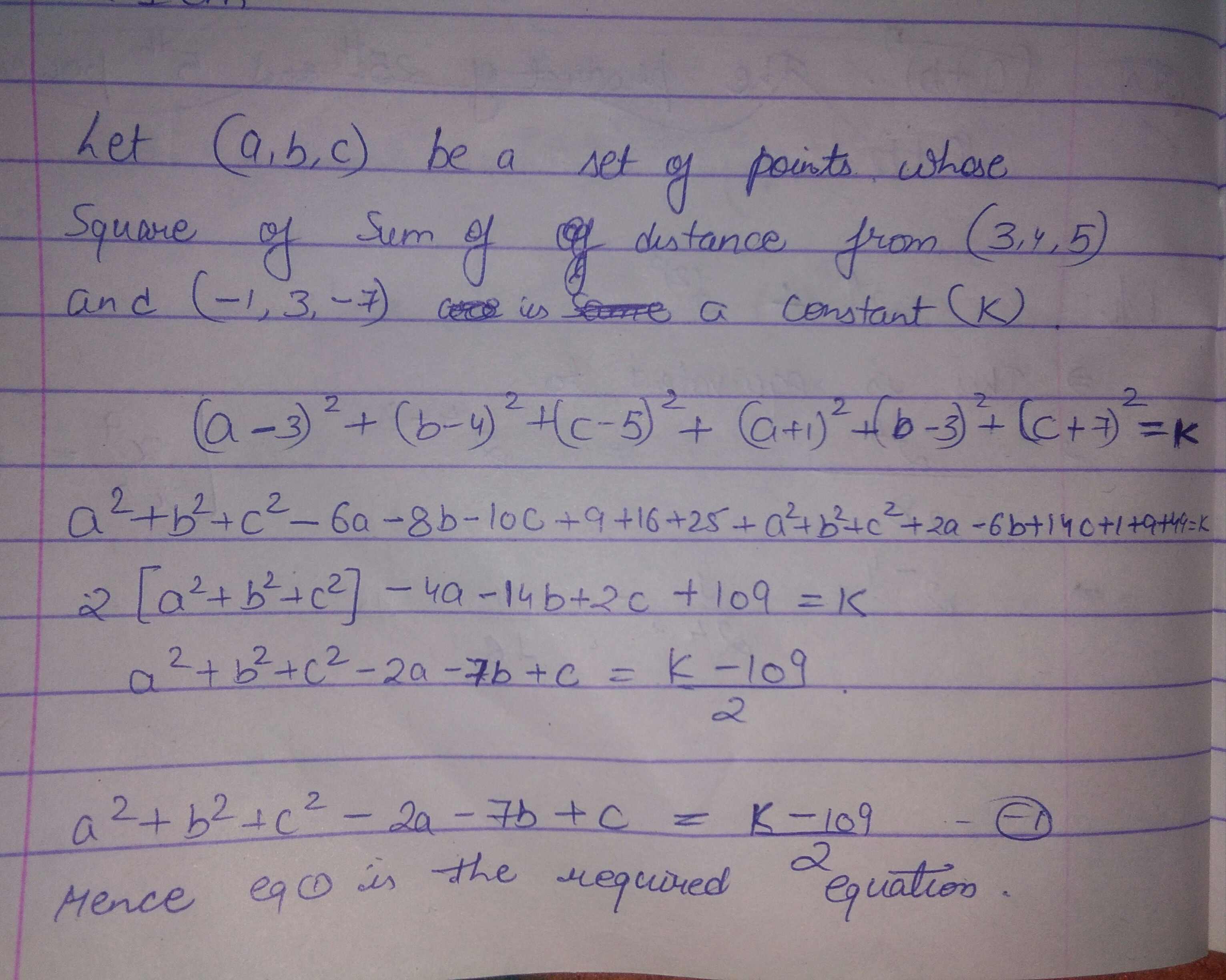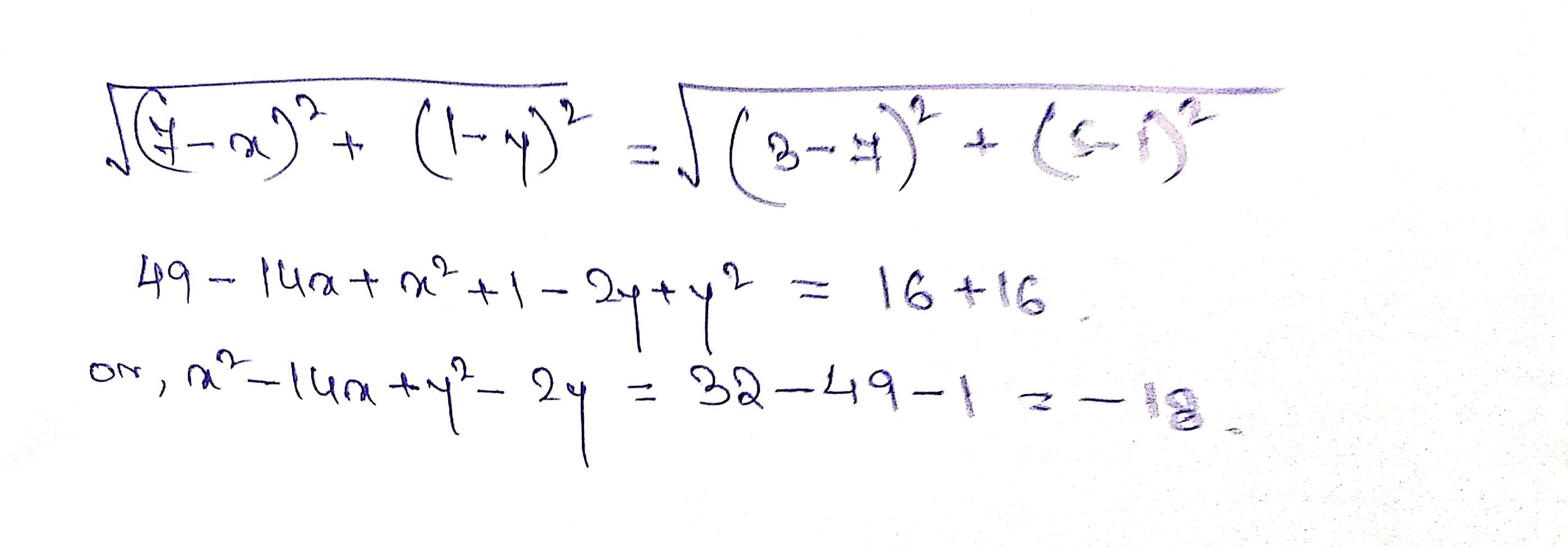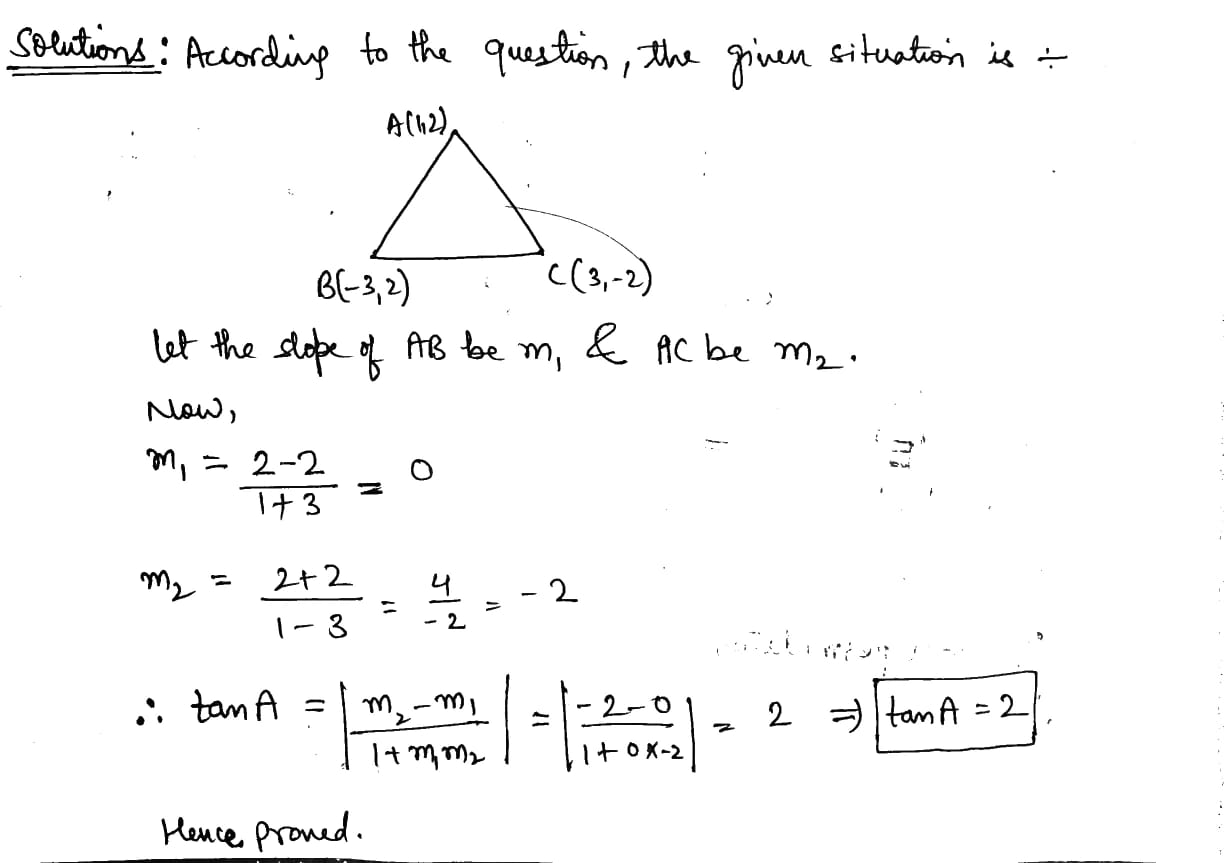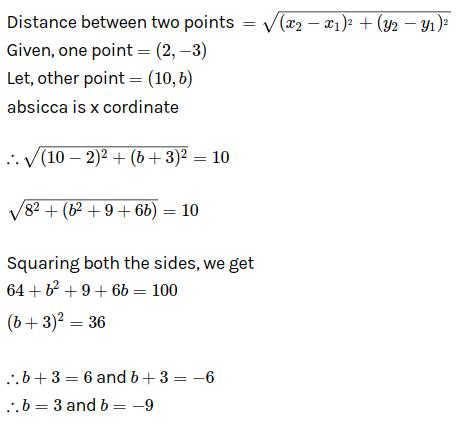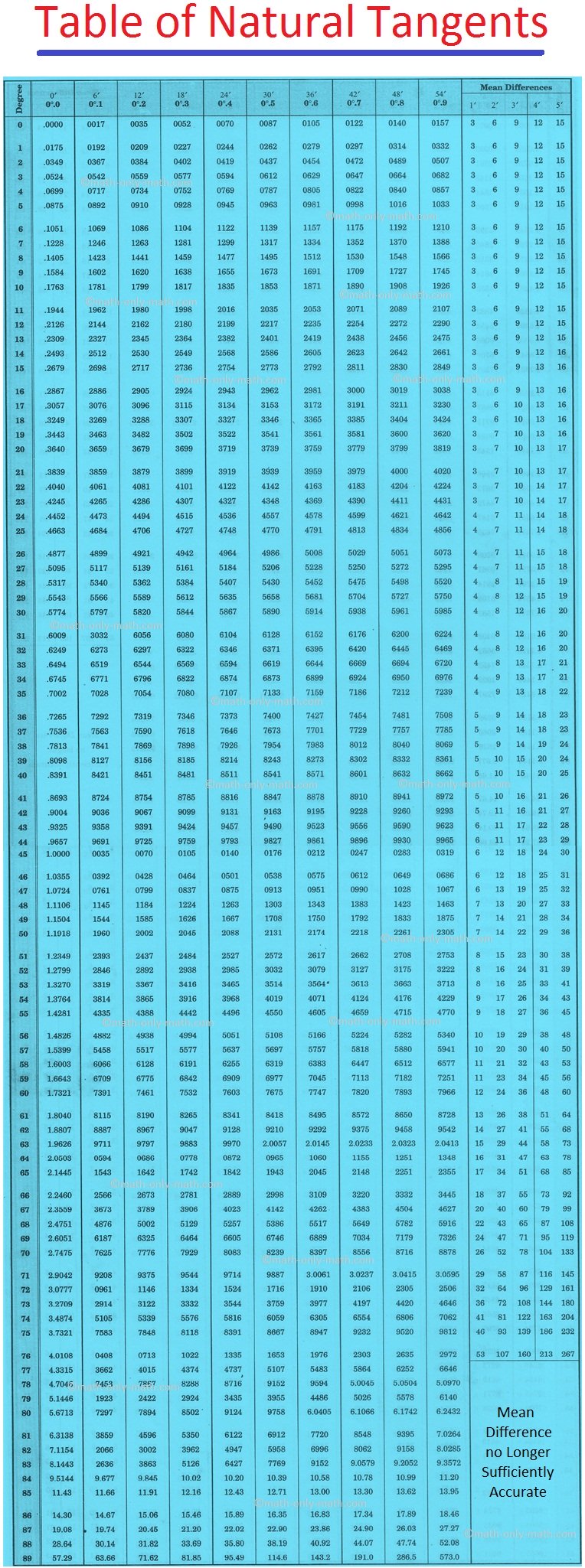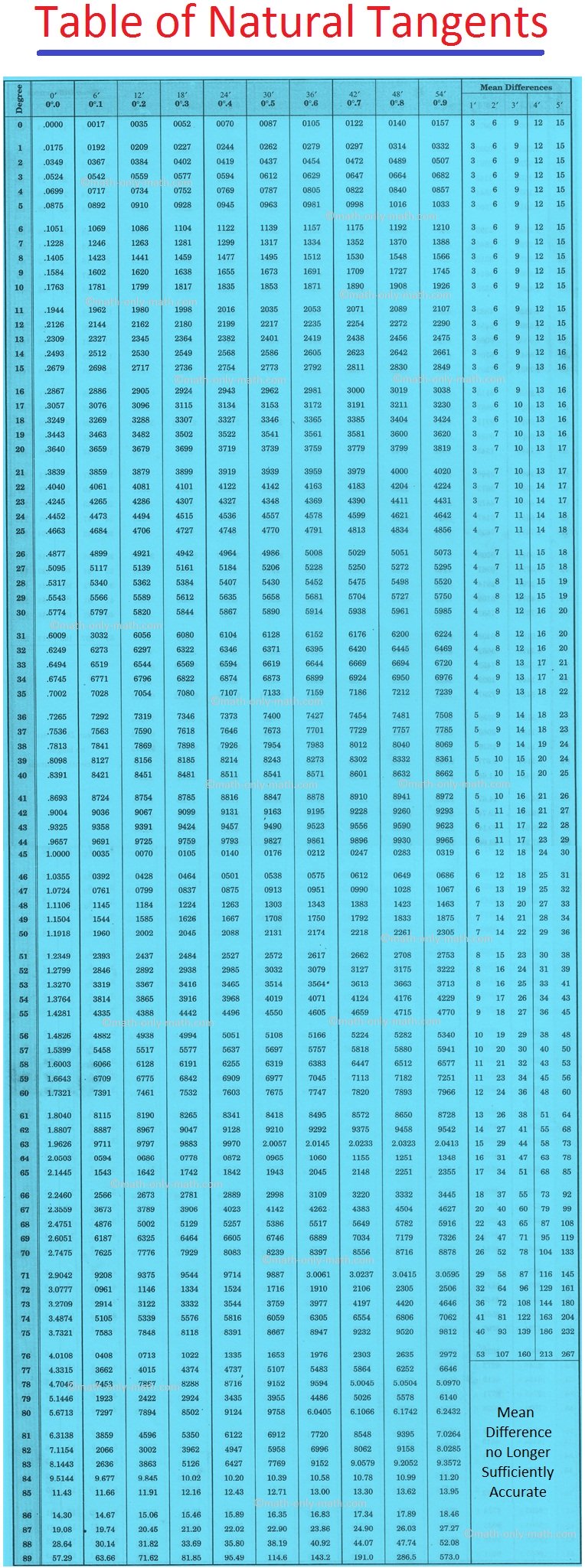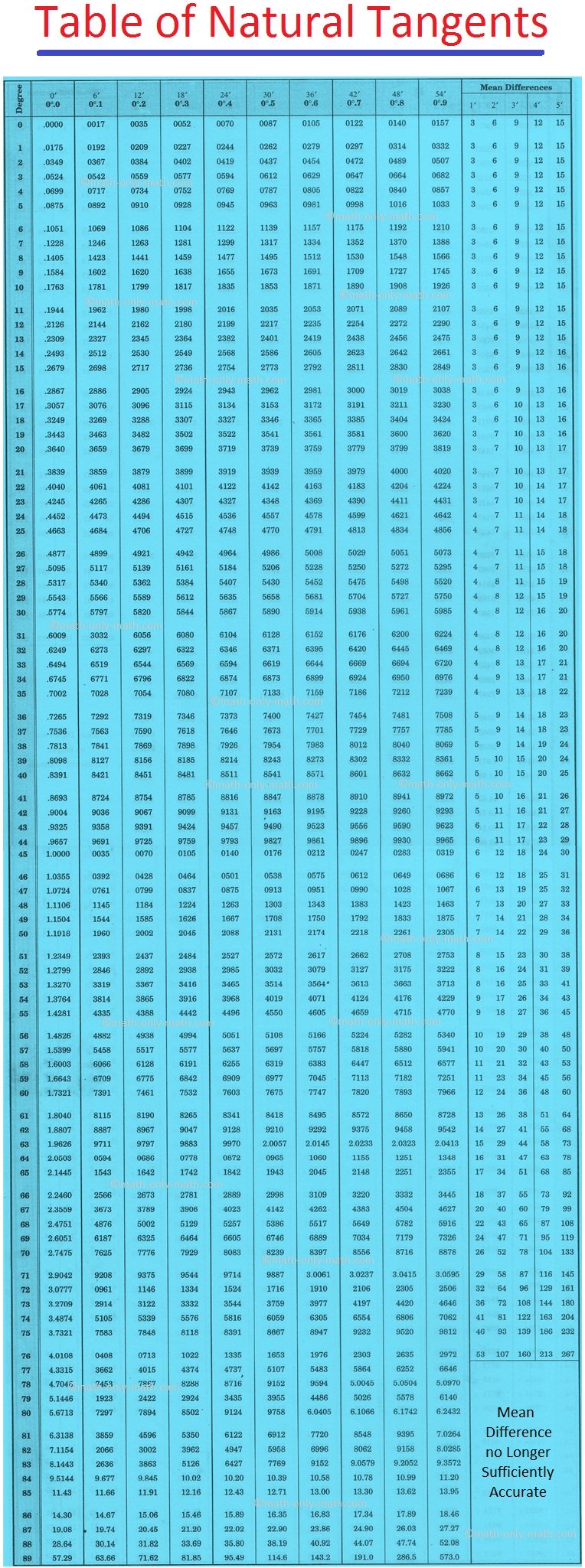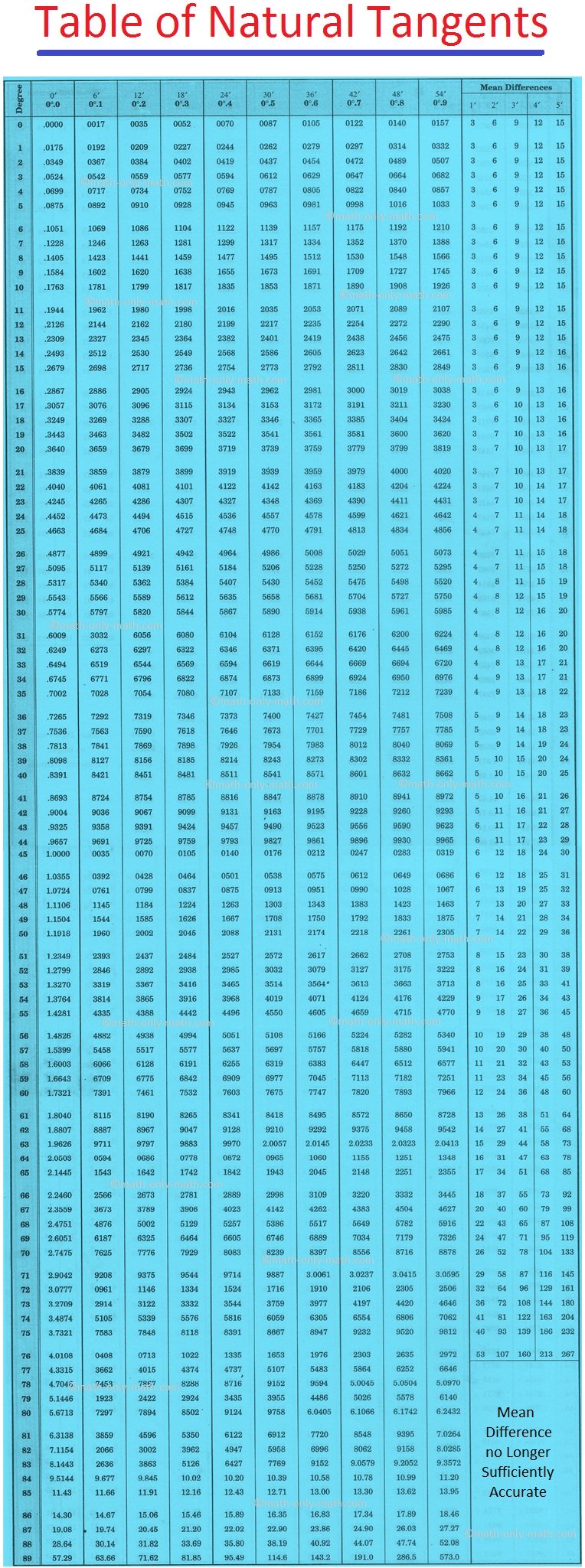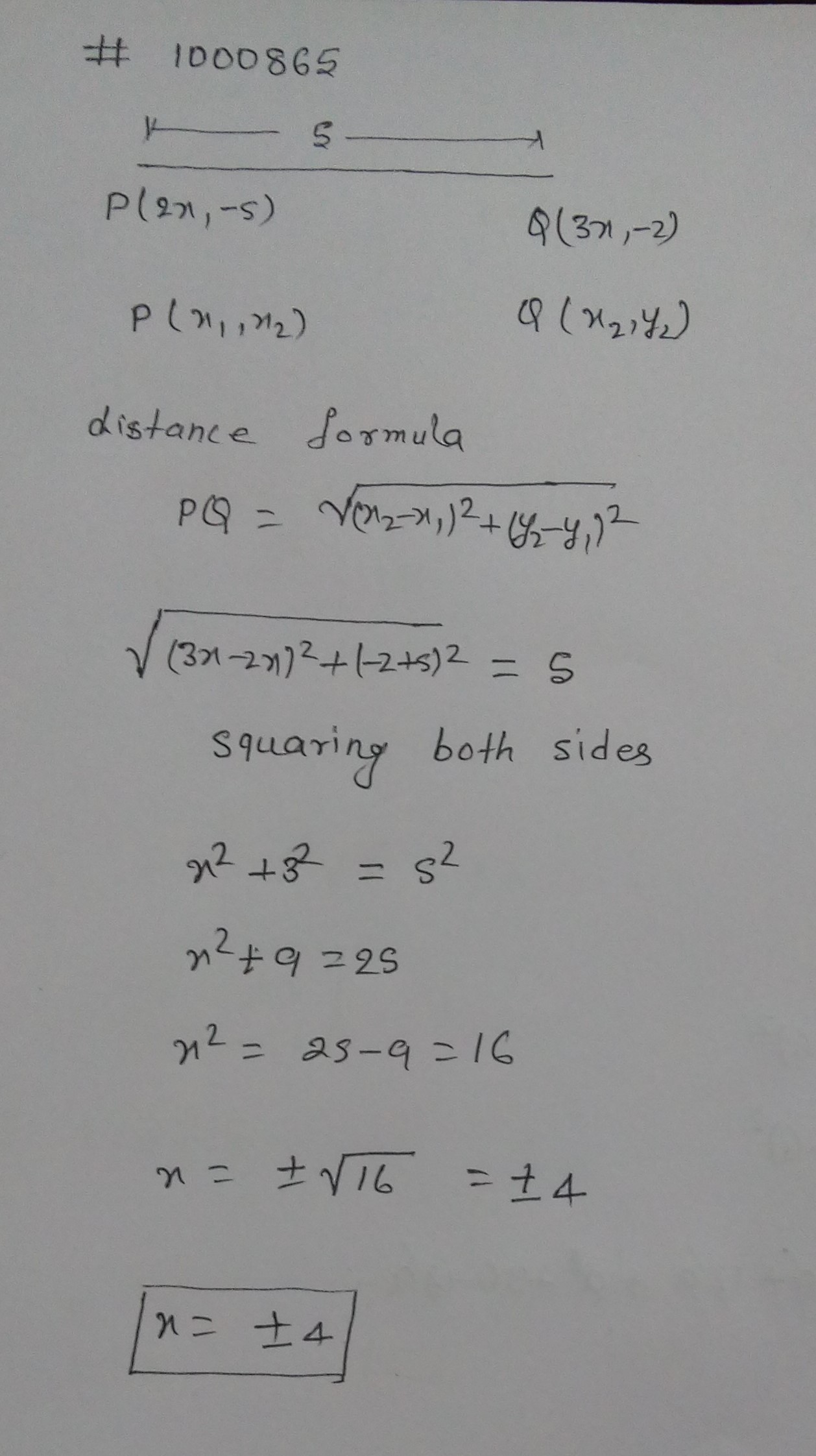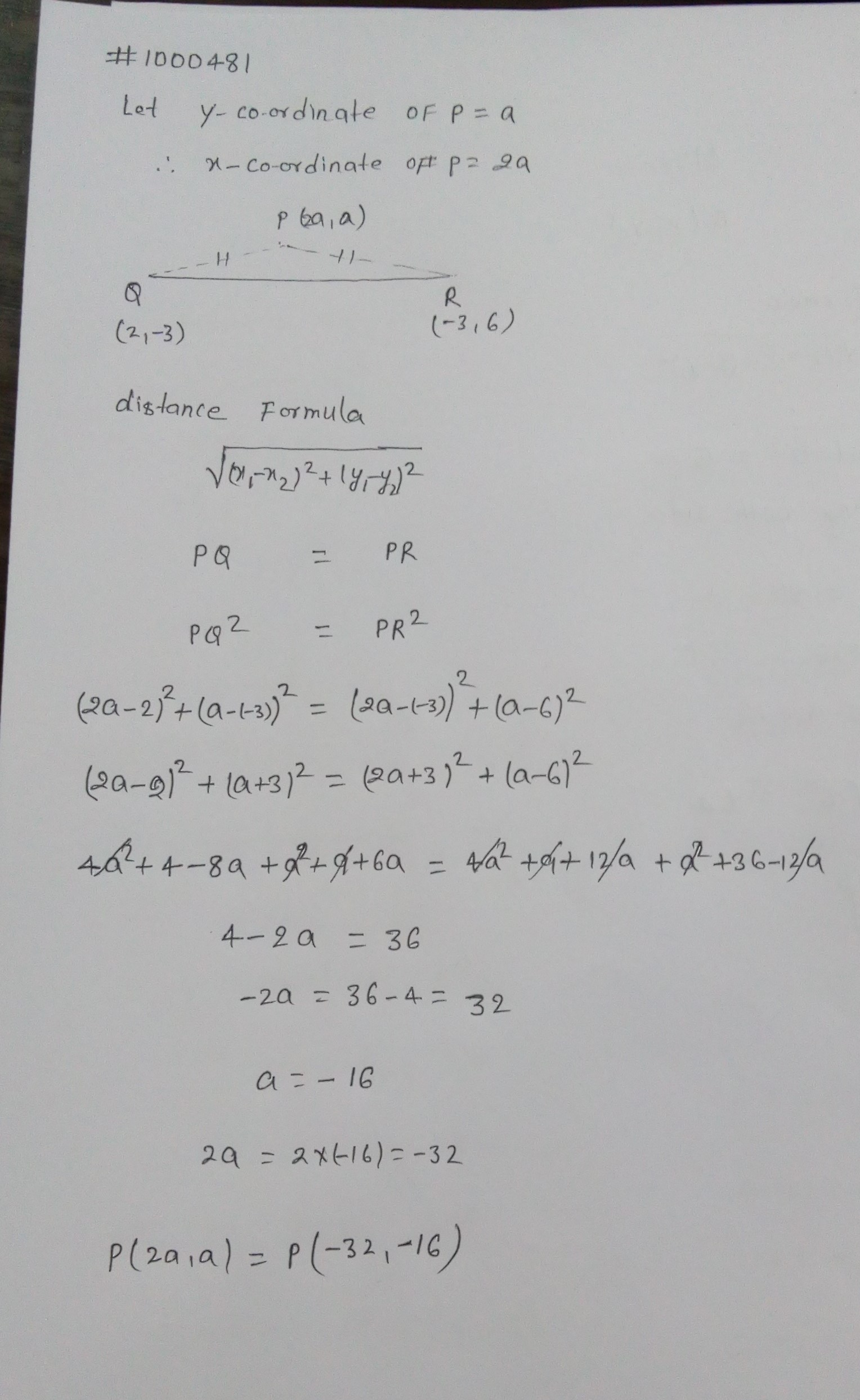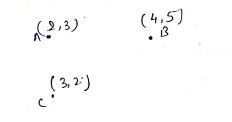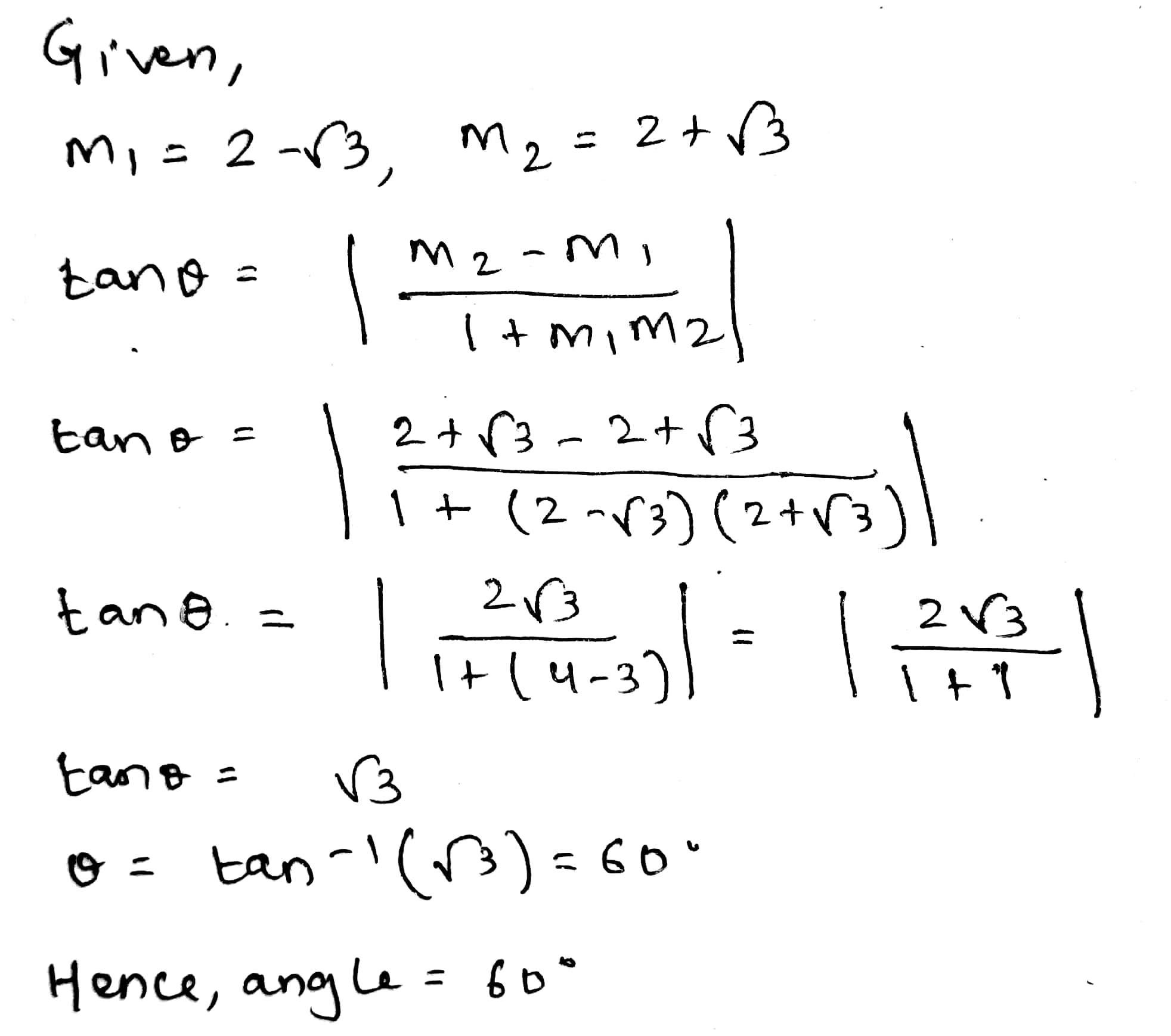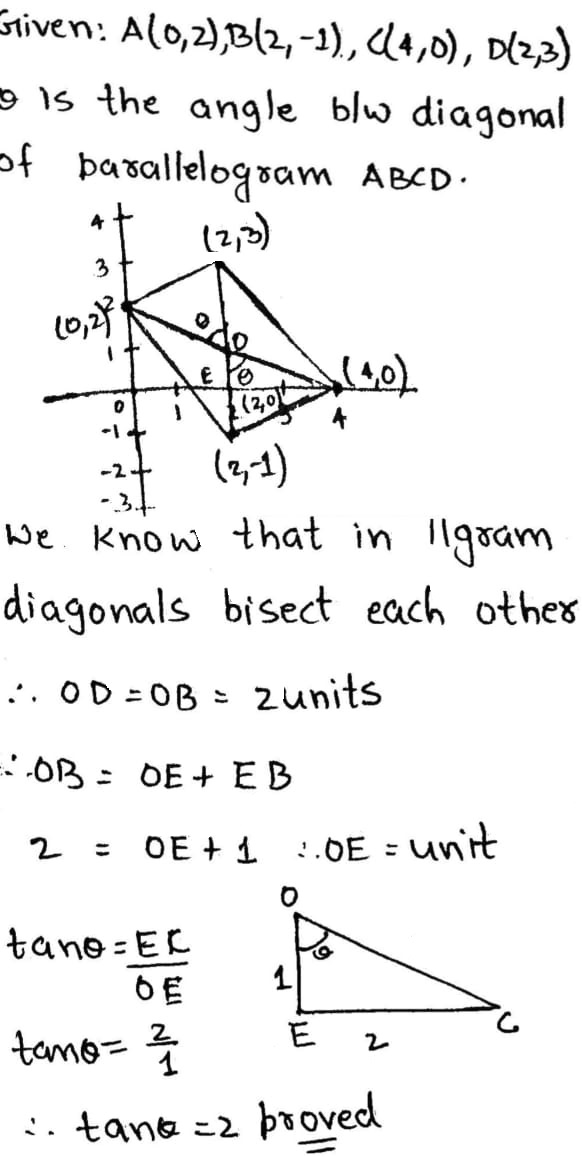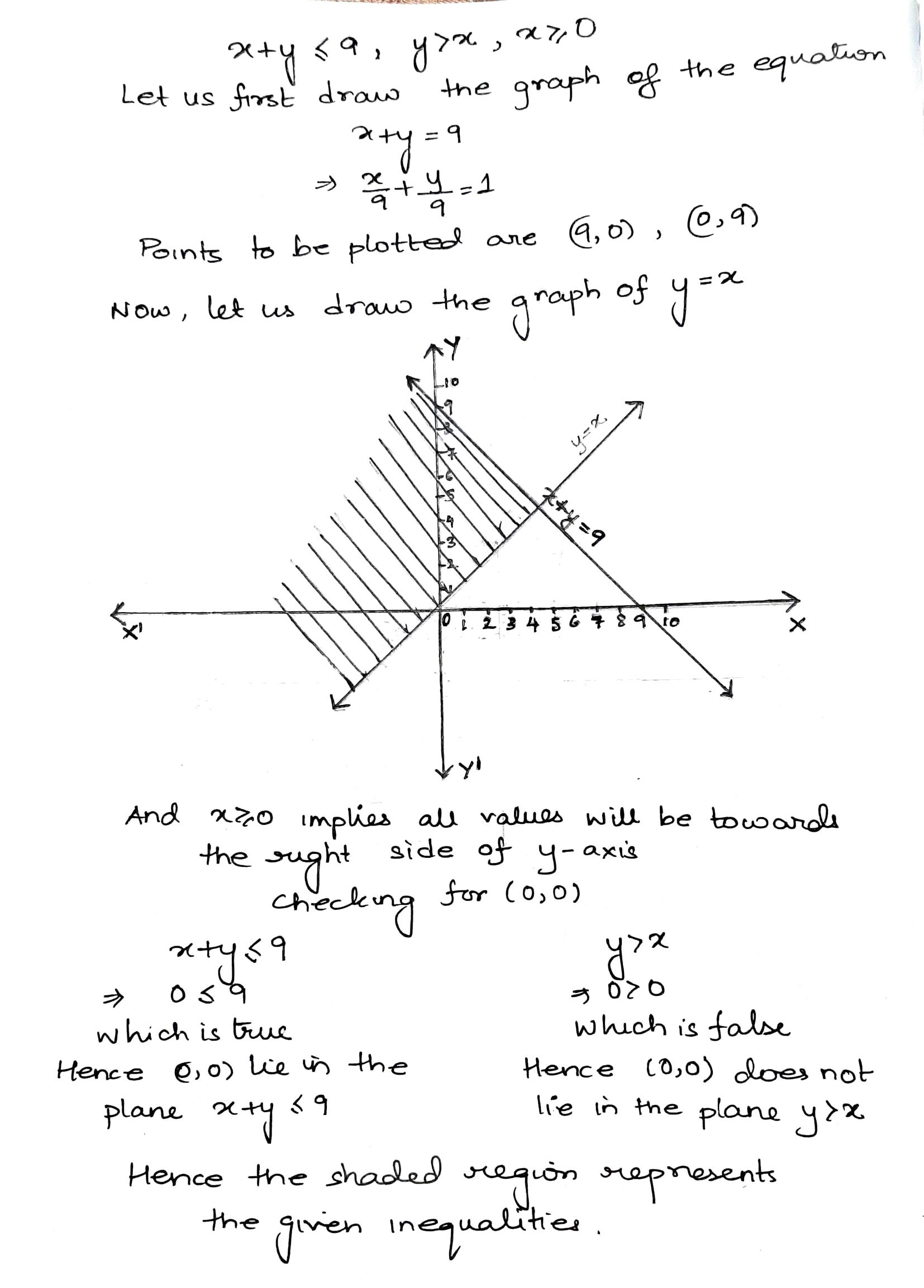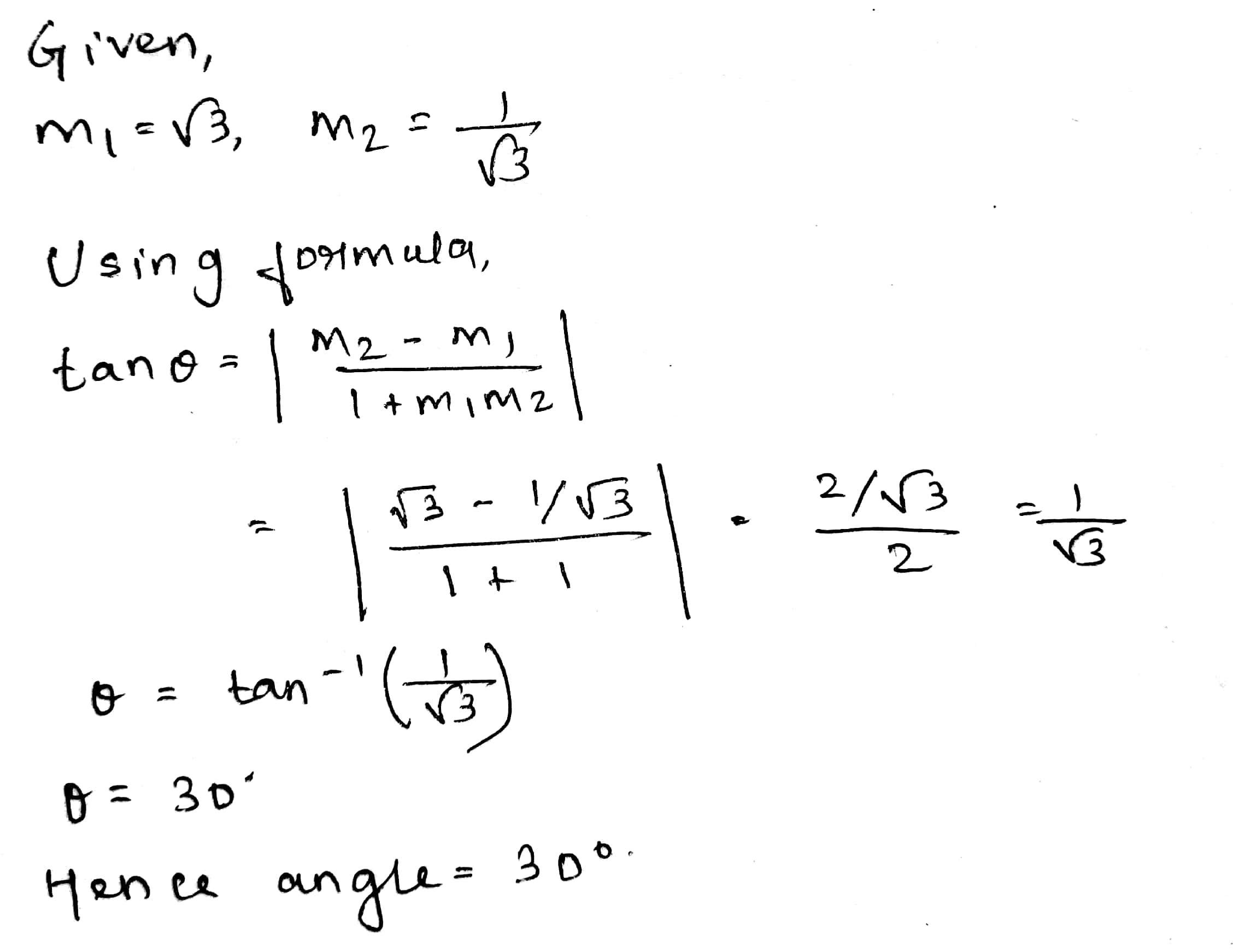Straight Lines - Class 11 Commerce Applied Mathematics - Extra Questions
How many points are there on the x-axis which are at a distance of 2√5 from the point (7,4)?
Determine whether the points are vertices of a right triangle A(−3,−4), B(2,6) and C(−6,10)
The point on the y-axis equidistant from (−5,2) and (9,−2) is (0,−m), them m
Find the perimeter of a triangle whose vertices have the coordinates (3,10),(5,2) and (14,12).
Show that the two parabolas x2+4a(y−2b−a)=0 and y2=4b(x−2a+b) intersect at right angles at a common end of the latus rectum of each.
Which point on x-axis is equidistant from (5,9) and (−4,6)?
The vertices of a triangle are A(−2,2),B(4,4)andC(8,2). Find the length of the medians to the sides
Find the slope of the line passing through the points (3,−2) & (7,−2)
Find the value of x for which the distance between p(2,−3) and q(x,5) is 10 units.
Find a point on x−axis which is equidistant from A(2,−5) and (−2,9).
Find the slope of line which passes through the point (7,11) and (9,15) .
Show that the points (3,−2),(1,0),(−1,−2) and (1,−4) are concyclic
Find the point on x-axis which is equidistant from the points (2,-5) and (-2,9).
If the points A(1,2),B(−4,3),C(x,2) and D(2,3) form parallelogram find the value of x.
If the point A(a,2) is equidistant from the points B(8,−2) and C(2,−2), the value of a.
If (a,b) is the mid-point of the line segment joining the points A(10,−6),B(k,4) and a−2b=18,find the value of k and the distance AB.
A point P on X-axis is at distance 13 from A(11,12). Find the coordinates of P.
If P(2,P) is the mid point of the line segment joining the the points. A(6,−5) and B(−2,11) find the value of P.
Find the slope of the line whose inclination is 30o
21 - 3(b - 7) = b + 20
Find the inclination of a line whose slope is
(i) 1
(ii) −1
(iii) √3
(iv) −√3
(v) 1√3
Find the slope of the line perpendicular to AB if A=(0,−5) and B=(−2,4).
Find the distance between the following pairs of points:-
(2,3),(4,1)
Find the angle between the line √3x+y+1=0 and x+1=0.
If point (x,y) is equidistant from point (3,k) and (k,3) then find the value of k when x≠y
Show that the point A(-2,3,5), B(1,2,3) and C(7,0,-1) are collinear .
Find the distance of the point P(−6,8) from the origin.
Let A(6,4) and B(2,12) be two given points. Find the slope of a line perpendicular to AB.
A(0,2),B(0,5) be any two points, then the distance between them is _________.
The distance between the two points is 5. One of them is (3,2) and the ordinate of the second is −1 , then find sum of its x-coordinate.
Mid-points of the sides AB and AC of ΔABC are (3,5) and (−3,−3), respectively, then find the length of BC.
The vertices of a triangle are A (2,2), B (−4,−4), C (5,−8). Then, if the length of the median through C is √m.Find m
If P(x,y) is a point in the coordinate plane such that locus of P is
Find the angles between the lines √3x+y=1 and x+√3y=1
Find the slope of a line passing through the points with coordinates (−1,0) and (1,3).
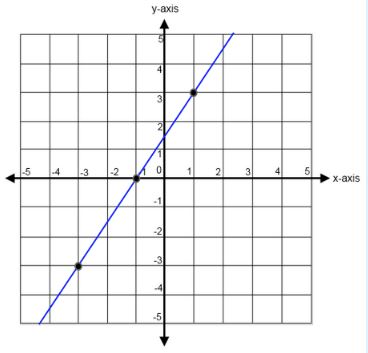
Find the equation of the line that passes through the points (−1,0) and (−2,4)
The distance between A(1, 3) and B(x, 7) isCalculate the possible values of x
A chair is 5 feet from one wall of a room and 7 feet from the wall at a right angle to it. How far is the chair from the intersection of the two walls?
Find the slope of the line with inclination 60∘
Prove that the equations to the straight lines passing through the origin which make an angle α with the straight line y+x=0 are given by the equation
x2+2xysec2α+y2=0.
Prove that the angle between the straight lines joining the origin to the intersection of the straight line y=3x+2 with the curve x2+2xy+3y2+4x+8y−11=0 is tan−12√23
Prove that the points (3,0)(6,4) and (−1,3) are the vertices of a right angled isosceles triangle.
Find the value of k if the angle between St. lines 4x−y+7=0,kx−5y−9=0 is 45∘.
Prove that the product of the lengths of the perpendiculars drawn from the points (√a2−b2,0) and(−√a2−b2,0) to the line xacosθ+ybsinθ=1 is b2.
Show that the quadrilateral whose vertices are (2,−1),(3,4),(−2,3) and (−3,−2) is a rhombus.
Which point on y-axis is equidistant from (2,3) and (−4,1)?
Two vertices of an isosceles triangle are (2,0) and (2,5). Find the third vertex if the length of the equal sides is 3.
Find the centre of the circle passing through (6,−6),(3,−7) and (3,3)
Name the quadrilateral formed, if any, by the following points and give reasons for your answers:
A(−1,−2),B(1,0),C(−1,2),D(−3,0)
Prove that the points (3,0),(4,5),(−1,4) and (−2,−1), form a rhombus. Also, find its area.
If the point P(x,y) is equidistant from the points A(5,1) and B(1,5) prove that x=y.
Prove that the points (3,−2),(4,0),(6,−3) and (5,−5) are the vertices of a parallelogram.
If A=(2,3), B=(−2,3) and P moves such that |PA−PB|=4, then find the locus of P.
If (−4,0) and (4,0) are two vertices of an equilateral triangle, find the coordinates of its third vertex.
If P(2,−1),Q(3,4),R(−2,3) and S(−3,−2) be four points in a plane, show that PQRS is a rhombus but not a square. Find the area of the rhombus.
Prove that the points (−2,−1),(1,0),(4,3) and (1,2) are the vertices of a parallelo-gram. Is it a rectangle?
If coordinate of two points A and B are (3,4) and (5,−2) find coordinates of P if PA=PB and area of △PAB=10
Find the angle between the x-axis and the line joining the point (3,−1) and (4,−2).
Find the points on the X-axis which are at a distance of 2√5 from the point (7,−4). How many such points are there?
If R(x,y) is a point on the line segment joining the points P(a,b) and Q(b,a), the prove that x+y=a+b.
Show that O(0,0),C(a,0),B(a,b),C(0,b) are the vertices of a rectangle. If P(x,y) is a point in the coordinates plane, then prove using formula that PQ2+PB2=PA2+PC2.
In each of the following find the value of ′k′, for which the points are collinear.
(7,−2),(5,1),(3,k).
If the distance between points (x,0) and (0,3) is 5, what are the values of x?
Find the point on Y-axis which is equidistant from (−6,4) and (2,−8).
Prove that the points A(−5,4),B(−1,−2) and (5,2) the vertices of an isosceles right-angled triangle. Find the coordinates of D, so that ABCD is a square.
If the image of the point (2,1) with respect to a line mirror be (5,2), find the equation of the mirror.
If the points (1,1),(−1,−1) and (−√3,k) are vertices of an equilateral triangle find the value of k.
Find the point on the x-axis which is equidistant from the points (2,−5) and (−2,9).
Find the ordinate of point whose abscissa is 10 and which is at a distance of 10 units from the point P(2,−3).
Find all possible values of a for which the distance between the points A(a,−1) and B(5,3) is 5 units.
Prove that the points A(−2,−1),B(1,0),C(4,3) and D(1,2) are the vertices of a parallelogram ABCD.
Find a point on the x-axis which is equidistant from the points (7,6) and (3,4).
Find that point on y axis which as equidistant from point (6,5) and (−4,3)
Find the co-ordinates of the point equidistant from the points A(−2,−3),B(−1,0) and C(7,−6)
Find the cosine of the angle A of the triangle with vertices A(1,−1),B(6,11) and C(1,2).
Find the distance between the points A (a,b) and B(b,a) if a-b=4.
If point (x,y) is equidistant from points (7,1) and (3,5) show that y =x-2
Find a point on Y-axis which is equidistant from P(−6,4) and Q(2,−8).
Find the equation of a straight line:
with slope −1/3 and y−intercept −4.
Prove that the points (0,−1).(2,1).(0,3) and (−2,1). are the vertices of square?
Show that the points (12 , 8),(-2 , 6) and (6 , 0), are the vertices of a right angled triangle.
Find the coordinates of point P which divides the line segment joining A(−2,−7) and B(6,1) in the ratio 5:3
If A is ( - 1,2,0 ) , B is ( 1,2,3 ) and C is ( 4,2,1 ) , then prove that \Delta A B C is an isosceles right triangle.
How many points are there on the x-axis whose distance from the point (2,3) is less than 3 units ?
If the distances of { P }({ x },{ y }) from { A }(5,1) and { B }(-1,5) are equal then, prove that 3{ x }=2{ y }.
If the point P(1,2) lies on line segment joining the points A(2,4) and B(4,8) then find \dfrac{{AP}}{{AB}}.
Find the angle between the curves given below :
y^{2}=4x,\ x^{2}+y^{2}=5
evaluate:
3x-5y=16;x-3y=8
If the slope of a line joining A(2,x)B(-3,7) is 1 then find x.
Find the equation of the set of points such that the sum of the square of its distance from the points (3,4,5) and (-1, 3, -7) is a constant.
Are the points given below collinear? If, state which point lies between the other two d(P,Q)=11, d(Q,R)=6.5, d(P,R)=4.5
If \left(1,x\right) is at \sqrt{10} units from \left(0,0\right) then find the values of x
If the points A\left(2,0,0\right),\,B\left(4,p,q\right) and C\left(1,5,2\right) are collinear,find the values of p and q
If the points A\left(1,0,-2\right),\,B\left(2,p,q\right) and C\left(-1,5,2\right) are collinear,find the values of p and q
If the points A\left(-1,-2,1\right),\,B\left(-2,p,q\right) and C\left(1,-2,-1\right) are collinear,find the values of p and q.
If the points A\left(4,2,2\right),\,B\left(4,p,q\right) and C\left(2,3,3\right) are collinear,find the values of p and q
Find the relation between x and y such that the point (x,y) is equidistnat from the points (7,1) and (3,5)
Given A=(3,1) and B(0,y-1). Find y if AB=5.
find the distance between A(cos \theta ,Sin\theta ) and B (sin\theta ,-Cos\theta ) using distance formula.find the co-ordinates of the mid point of the line joining the points (3,-10 ) and (6,-8).
If A(1, 2), B(-3, 2) and C(3, -2) be the vertices of a \triangle ABC, show that
\tan A=2
If A(1, 2), B(-3, 2) and C(3, -2) be the vertices of a \triangle ABC, show that
\tan B=\dfrac{2}{3}
A line is of length 10 and one end is at the point (2, -3); if the abscissa of the other end be 10, prove that its ordinate must be 3 or -9.
A is a point on the parabola y^{2}=4 a x . The normal at A cuts the parabola again at point B .If A B subtends a right angle at the vertex of the parabola. find the slope of A B
Find the slope of the line passing through the following pairs of points:
(a, -b) and (b, -a)
Find the slope of the line whose inclination is:
72^\circ 30'
Find the slope of the line passing through the following pairs of points:
(-2, -3) and (1, 2)
Find the slope of the line whose inclination is:
46^\circ
Find the slope of the line passing through the following pairs of points:
(-4, 0) and origin
Find the inclination of the line whose slope is:
1.0875
Find the inclination of the line whose slope is:
0.7646
Without using the distance formula, show that the points A (4, 5), B (1, 2), C (4, 3) and D (7, 6) are the vertices of a parallelogram.
Find the slope of the line parallel to AB if:
A = (0, -3) and B = (-2, 5)
Without using the distance formula, show that the points A (4, -2), B (-4, 4) and C (10, 6) are the vertices of a right-angled triangle.
Find the slope of the line perpendicular to AB if:
A = (0, -5) and B = (-2, 4)
Find the slope of the line parallel to AB if:
A = (-2, 4) and B = (0, 6)
The line passing through (0, 2) and (-3, -1) is parallel to the line passing through (-1, 5) and (4, a). Find a.
Find the slope of the line perpendicular to AB if:
A = (3, -2) and B = (-1, 2)
(-2, 4), (4, 8), (10, 7) and (11, -5) are the vertices of a quadrilateral. Show that the quadrilateral, obtained on joining the mid-points of its sides, is a parallelogram.
The line passing through (-4, -2) and (2, -3) is perpendicular to the line passing through (a, 5) and (2, -1). Find a.
Determine x so that the slope of the line through (1, 4) and (x, 2) is 2.
Coordinates of A are (1,1) and of A_{n} are (n, 2n + 1), O is the origin, then match the columns :
A_{1}, A_{2},....A_{n} are points on the line y=x lying in the positive quadrant such that OA_{n}=n O \ A_{n-1}, O being the origin . If OA_{1}=1 then the coordinates of A_{8} are (3a \sqrt 2, 3a \sqrt 2) where a is equal to
Find the value of x for which the distance between the points P(2x,-5) and Q(3x,-2) is 5 units.
The x-coordinate of point P is twice its y-coordinate. If P is equidistant from Q(2, -3) and R(-3, 6) then find the coordinate of P.
Let ABC,be a triangle such that the coordinates of the vertex A are (-3,1).Equation of the median through B is 2x+y-3=0 and equation of the angular bisector of C is 7x-4y-1=0.Find the slope of line BC.
Prove that the points (at^2_1, 2at_1), (at^2_2, 2at_2) and (0, a) will be collinear, if t_1t_2=-1.
Show that A(2, 3), B(4, 5) and C(3, 2) can be the vertices of a rectangle. Find the coordinates of the fourth vertex.
Find the points on the x-axis, whose distance from the line \dfrac{x}{3}+\dfrac{y}{4}=1 are 4 units.
Find the angle between the lines whose slopes are (2-\sqrt 3) and (2+\sqrt 3).
If \theta us the angle between the diagonals of a parallelogram ABCD whose vertices are A(0, 2), B(2, -1), C(4, 0) and D(2, 3). Show that \tan \theta=2.
If \theta is the angle between the lines joining the points A(0, 0) and B(2, 3), and the points C(2, -2) and D(3, 5), show that \tan \theta=\dfrac{11}{23}.
If A(1, 2), B(-3, 2) and C(3, -2) be the vertices of a \triangle ABC, show that
\tan C=\dfrac{4}{7}
Find the angle between the lines whose slopes are \sqrt 3 and \dfrac{1}{\sqrt 3}.
Class 11 Commerce Applied Mathematics Extra Questions
- Basics Of Financial Mathematics Extra Questions
- Circles Extra Questions
- Descriptive Statistics Extra Questions
- Differentiation Extra Questions
- Functions Extra Questions
- Limits And Continuity Extra Questions
- Logarithm And Antilogarithm Extra Questions
- Mathematical And Logical Reasoning Extra Questions
- Number Theory Extra Questions
- Numerical Applications Extra Questions
- Permutations And Combinations Extra Questions
- Probability Extra Questions
- Relations Extra Questions
- Sequences And Series Extra Questions
- Set Theory Extra Questions
- Straight Lines Extra Questions
- Tangents And Its Equations Extra Questions
